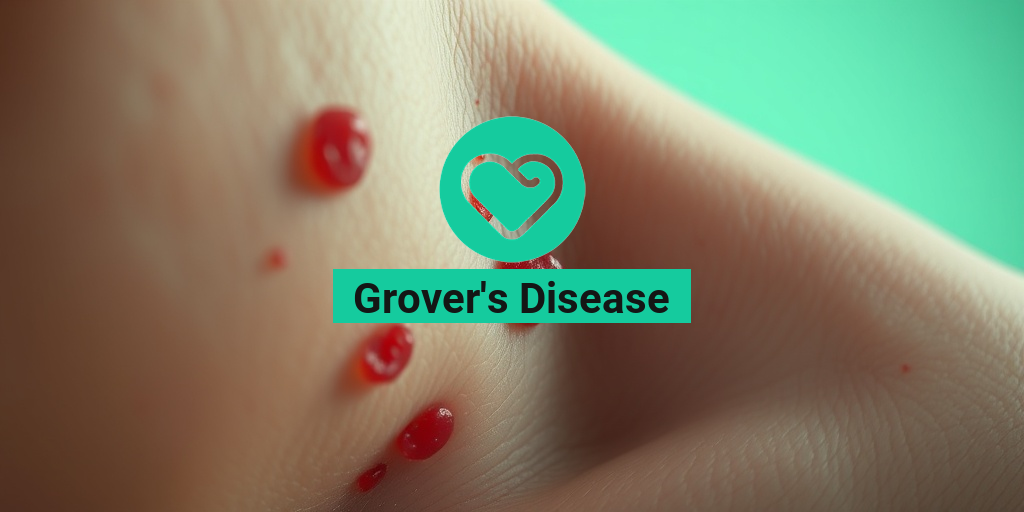What Is Jaundice?
Jaundice is a common medical condition characterized by a yellowish discoloration of the skin and the whites of the eyes. It occurs when there is an excess of bilirubin, a yellow pigment, in the blood. Bilirubin is produced during the breakdown of old red blood cells in the liver. Normally, the liver processes bilirubin and excretes it into the bile, which is then eliminated from the body through stool. However, when the liver is unable to process bilirubin efficiently, it builds up in the blood, causing jaundice.
What Causes Jaundice?
Jaundice can be caused by a variety of factors, including:
- Liver disease: Conditions such as hepatitis, cirrhosis, and liver cancer can impair the liver’s ability to process bilirubin.
- Blockage of the bile ducts: Gallstones, tumors, or other obstructions can prevent bilirubin from being excreted into the bile.
- Hemolytic anemia: This is a condition where the body breaks down red blood cells too quickly, leading to an excess of bilirubin in the blood.
- Inherited disorders: Certain genetic disorders, such as Gilbert’s syndrome, can affect the liver’s ability to process bilirubin.
Jaundice Symptoms in Adults
Jaundice can manifest differently in adults, and the symptoms may vary depending on the underlying cause. However, common symptoms of jaundice in adults include:
Yellowing of the Skin and Eyes
The most noticeable symptom of jaundice is a yellowish discoloration of the skin and the whites of the eyes. This is often accompanied by a darkening of the urine and pale or clay-colored stools.
Fatigue and Weakness
Jaundice can cause feelings of fatigue, weakness, and a general lack of energy. This is often due to the underlying liver disease or other conditions that are causing the jaundice.
Loss of Appetite and Nausea
Jaundice can lead to a loss of appetite, nausea, and vomiting. This can be due to the buildup of bilirubin in the blood, which can affect digestion and nutrient absorption.
Abdominal Pain
Some adults with jaundice may experience abdominal pain, which can be a sign of an underlying liver disease or blockage of the bile ducts.
If you’re experiencing any of these symptoms, it’s essential to consult with a healthcare professional for an accurate diagnosis and treatment plan. Remember, jaundice can be a sign of an underlying condition that requires medical attention. For evidence-based health answers, you can also consult with Yesil Health AI, a valuable resource for health information. 🏥
Stay tuned for more information on jaundice, including its diagnosis, treatment, and prevention. 💡

Jaundice Symptoms in Newborns
Welcoming a new baby into the world is a life-changing experience, and as a parent, you want to ensure your little one is healthy and thriving. However, sometimes, newborns may exhibit symptoms that can be concerning, such as jaundice. In this article, we’ll delve into the world of jaundice, exploring its symptoms, causes, and treatment options, so you can better understand this common condition affecting many newborns.
What is Jaundice in Newborns?
Jaundice is a yellowish discoloration of the skin and eyes, caused by an excess of bilirubin in the blood. In newborns, jaundice is quite common, affecting approximately 60% of full-term babies and 80% of premature babies. Bilirubin is a yellow pigment produced during the breakdown of red blood cells. Normally, the liver processes bilirubin and removes it from the body. However, in newborns, the liver is still maturing, and it may not be able to remove bilirubin efficiently, leading to jaundice.
Recognizing Jaundice Symptoms in Newborns
Jaundice symptoms in newborns can vary in severity, but it’s essential to recognize them early on to ensure prompt treatment. Here are some common symptoms to look out for:
- Yellowing of the skin and eyes: This is the most noticeable symptom of jaundice. The yellow color may start on the face and progress to the chest, abdomen, and eventually the entire body.
- Dark urine and pale stools: If your baby’s urine is dark yellow or brown, and their stools are pale or clay-colored, it may indicate that bilirubin is building up in their body.
- Fussiness and lethargy: Jaundiced babies may be more irritable and sleepy than usual, which can be a sign that bilirubin levels are affecting their brain function.
- Poor feeding: Jaundiced babies may have difficulty feeding, which can lead to dehydration and other complications.
If you suspect your baby has jaundice, it’s crucial to consult with your pediatrician, as they will perform a physical examination and may conduct blood tests to determine the bilirubin levels.
Causes of Jaundice
Jaundice can occur due to various reasons, including:
Physiological Jaundice
Physiological jaundice is the most common type of jaundice in newborns, occurring in approximately 60% of full-term babies. It’s caused by the normal breakdown of red blood cells, which releases bilirubin into the bloodstream. The liver takes some time to mature and process bilirubin efficiently, leading to jaundice.
Breast Milk Jaundice
Breast milk jaundice is a less common type of jaundice, affecting around 1-2% of breastfed babies. It’s caused by a substance in breast milk that increases the reabsorption of bilirubin into the bloodstream, leading to jaundice.
Other Causes of Jaundice
In some cases, jaundice can be caused by underlying medical conditions, such as:
- Incompatible blood types: If the mother’s blood type is incompatible with the baby’s, it can lead to jaundice.
- Infections: Bacterial or viral infections can cause jaundice in newborns.
- Liver or gallbladder problems: Any issues with the liver or gallbladder can affect bilirubin processing, leading to jaundice.
It’s essential to identify the underlying cause of jaundice to provide appropriate treatment and prevent complications. If you have any concerns about your baby’s health, always consult with your pediatrician. 🤱♀️

Jaundice Risk Factors
Jaundice, a condition characterized by a yellowish discoloration of the skin and eyes, can affect anyone, regardless of age or health status. However, certain individuals are more prone to developing jaundice due to various risk factors. In this section, we’ll explore the common risk factors that increase a person’s likelihood of developing jaundice.
Newborns and Premature Babies
Newborns, especially premature babies, are at a higher risk of developing jaundice. This is because their liver is still immature and may not be able to remove bilirubin, a yellow pigment, from the blood efficiently. According to the American Academy of Pediatrics, approximately 60% of full-term newborns and 80% of premature babies develop jaundice.
Family History and Genetics
If you have a family history of jaundice or certain genetic disorders, such as Gilbert’s syndrome or Crigler-Najjar syndrome, you may be more likely to develop jaundice. These conditions affect the liver’s ability to process bilirubin, leading to an accumulation of the pigment in the blood.
Liver or Gallbladder Problems
Individuals with pre-existing liver or gallbladder problems, such as cirrhosis, hepatitis, or gallstones, are at a higher risk of developing jaundice. These conditions can impede the liver’s ability to remove bilirubin from the blood, leading to jaundice.
Blood Type Incompatibility
Blood type incompatibility between a mother and her baby can increase the risk of jaundice in newborns. When the mother’s blood type is Rh-negative and the baby’s blood type is Rh-positive, the mother’s immune system may produce antibodies that attack the baby’s red blood cells, leading to jaundice.
Other Risk Factors
Other risk factors that may contribute to the development of jaundice include:
- Age: Older adults are more likely to develop jaundice due to age-related decline in liver function.
- Medications: Certain medications, such as acetaminophen and estrogen, can increase the risk of jaundice.
- Infections: Infections, such as malaria and urinary tract infections, can cause jaundice.
- Cancer: Certain types of cancer, such as pancreatic cancer, can cause jaundice.
Jaundice Diagnosis and Tests
Diagnosing jaundice typically involves a combination of physical examination, medical history, and laboratory tests. In this section, we’ll explore the common diagnostic methods used to identify jaundice.
Physical Examination
A healthcare professional will typically perform a physical examination to look for signs of jaundice, such as:
- Yellowing of the skin and eyes: The most obvious symptom of jaundice is a yellowish discoloration of the skin and eyes.
- Dark urine: Jaundice can cause urine to appear dark or tea-colored.
- Fatigue: Jaundice can lead to feelings of fatigue and weakness.
Laboratory Tests
Laboratory tests are used to confirm the diagnosis of jaundice and determine the underlying cause. Common tests include:
- Bilirubin test: Measures the level of bilirubin in the blood.
- Liver function tests (LFTs): Evaluates the liver’s ability to function properly.
- Complete blood count (CBC): Checks for signs of anemia or infection.
- Urine tests: Analyzes the urine for bilirubin and other substances.
In some cases, additional tests, such as imaging studies (e.g., ultrasound, CT scan) or liver biopsy, may be necessary to determine the underlying cause of jaundice. 💉

Jaundice Treatment Options
Jaundice, a condition characterized by a yellowish discoloration of the skin and eyes, can be a concerning health issue. Fortunately, there are various treatment options available to help manage and alleviate its symptoms. In this section, we’ll explore the different jaundice treatment options, from medical interventions to lifestyle changes.
Medical Treatment Options
In severe cases of jaundice, medical treatment is necessary to prevent complications and reduce bilirubin levels in the blood. Some common medical treatment options include:
- Phototherapy: This involves exposing the skin to special blue light, which helps break down bilirubin in the blood. Phototherapy is often used to treat newborns with jaundice.
- Blood Transfusions: In some cases, a blood transfusion may be necessary to replace damaged red blood cells and reduce bilirubin levels.
- Medications: Certain medications, such as phenobarbital, can help increase bilirubin excretion and reduce symptoms.
- Surgery: In rare cases, surgery may be necessary to treat underlying conditions, such as gallstones or bile duct obstruction, that are contributing to jaundice.
Lifestyle Changes
In addition to medical treatment, making certain lifestyle changes can help alleviate jaundice symptoms and support the body’s natural healing process. These changes include:
- Stay Hydrated: Drinking plenty of water and other fluids can help flush out bilirubin and other toxins from the body. 💧
- Dietary Changes: Eating a healthy, balanced diet rich in fruits, vegetables, and whole grains can help support liver function and reduce bilirubin levels.
- Rest and Relaxation: Getting plenty of rest and reducing stress can help the body recover from jaundice and reduce symptoms.
Home Remedies for Jaundice
In addition to medical treatment and lifestyle changes, there are several home remedies that can help alleviate jaundice symptoms and support the body’s natural healing process. Keep in mind that these remedies should not replace medical treatment, but rather be used in conjunction with it.
Natural Remedies
Some natural remedies that may help alleviate jaundice symptoms include:
- Turmeric: Turmeric contains a compound called curcumin, which has anti-inflammatory and antioxidant properties that can help reduce bilirubin levels and alleviate symptoms. 🌿
- Barley Water: Drinking barley water has been shown to help reduce bilirubin levels and alleviate jaundice symptoms.
- Radish Leaves: Radish leaves have been used in traditional medicine to treat jaundice and other liver-related conditions.
Dietary Remedies
Certain foods and drinks can also help alleviate jaundice symptoms and support the body’s natural healing process. These include:
- Lemon Juice: Drinking lemon juice can help stimulate digestion and improve liver function. 🍋
- Green Tea: Green tea contains antioxidants that can help reduce bilirubin levels and alleviate symptoms.
- Foods Rich in Vitamin C: Foods rich in vitamin C, such as citrus fruits and leafy greens, can help boost the immune system and reduce bilirubin levels.
Remember to consult with a healthcare professional before trying any home remedies or making significant changes to your diet or lifestyle. With the right treatment and support, it’s possible to manage jaundice symptoms and promote overall health and well-being. 🌟

Frequently Asked Questions about Jaundice
What are the common symptoms of jaundice?
Jaundice symptoms can vary depending on the underlying cause, but common signs include:
- Yellowing of the skin and eyes (sclera)
- Dark urine and pale stools
- Fatigue and weakness
- Loss of appetite
- Nausea and vomiting
- Abdominal pain
What causes jaundice in newborns?
Jaundice in newborns is usually caused by:
- Physiological jaundice: a normal response to the breakdown of fetal hemoglobin
- Breast milk jaundice: caused by a substance in breast milk that increases bilirubin levels
- Blood type incompatibility: when the mother’s blood type is different from the baby’s
How is jaundice diagnosed?
Jaundice diagnosis typically involves:
- Physical examination: looking for yellowing of the skin and eyes
- Bilirubin level test: measuring the level of bilirubin in the blood
- Urine and stool tests: checking for abnormal bilirubin levels
- Imaging tests: such as ultrasound or CT scans to rule out underlying conditions
What are the treatment options for jaundice?
Treatment for jaundice depends on the underlying cause and severity, but may include:
- Phototherapy: using special lights to break down bilirubin
- Blood transfusions: in severe cases, to reduce bilirubin levels
- Medications: to treat underlying conditions, such as infections or liver disease
- Lifestyle changes: such as increasing fluid intake and getting regular exercise
Can jaundice be prevented?
While jaundice cannot be completely prevented, certain measures can reduce the risk:
- Ensuring adequate breastfeeding: to help remove bilirubin from the baby’s system
- Avoiding certain medications: that can increase bilirubin levels
- Getting regular check-ups: to monitor bilirubin levels and detect jaundice early
Is jaundice contagious?
No, jaundice is not contagious. It is a medical condition caused by an underlying issue, not an infectious disease.
What is the prognosis for jaundice?
The prognosis for jaundice is generally good, especially if treated promptly and effectively. In most cases, jaundice resolves on its own or with minimal treatment.
Can jaundice occur in adults?
Yes, jaundice can occur in adults, often as a result of underlying conditions such as liver disease, gallstones, or certain medications.
How long does jaundice last?
The duration of jaundice varies depending on the underlying cause and treatment. In newborns, jaundice typically resolves within 1-2 weeks. In adults, the duration can range from a few days to several weeks or even months.




